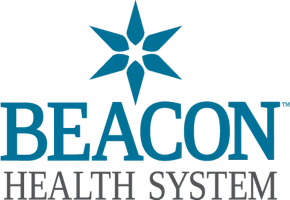When a healthcare organization provides care to a patient whose treatment costs depend on the outcome of a legal settlement such as after a motor vehicle accident or personal injury a medical lien can help ensure the provider is paid for the services rendered.
A medical lien is a legal claim that allows a healthcare provider to recover the cost of medical treatment directly from a patient’s future settlement or judgment. This lien secures the provider’s right to reimbursement and prevents proceeds from being distributed until the lien is satisfied.
Although the concept is simple, the process is highly regulated. Proper management of medical liens requires strict adherence to state-specific statutes, accurate documentation, and timely communication between providers, attorneys, and payers.
What is a medical lien in healthcare?
In legal terms, a lien is to claim a creditor’s place on property or funds to secure repayment of a debt. In healthcare, a medical lien is a formal mechanism that ensures hospitals, clinics, and physicians are compensated for services provided to patients pursuing legal claims.
Typical situations where medical liens are used include:
- Motor Vehicle Accidents (MVAs) where the patient is suing for damages
- Personal Injury Claims resulting from slip-and-fall, premises liability, or product defect cases
- Workers’ Compensation or Third-Party Liability (TPL) cases requiring extensive medical care not immediately covered by insurance
In these scenarios, the healthcare provider delivers treatment without upfront payment and later collects from the proceeds of a settlement or judgment.
How the lien amount is determined
The lien amount typically reflects the reasonable and customary charges for the medical services provided. It is submitted as part of the patient’s legal settlement and often negotiated between the healthcare provider and the patient’s attorney.
To support the lien, providers must maintain detailed records, including:
- Dates and types of services rendered
- Medical necessity documentation
- Corresponding CPT/HCPCS codes and charges
- Signed lien agreements from the patient or authorized representative
Best practice dictates using standardized lien templates that comply with state-specific notice and filing requirements. Many states mandate strict deadlines for filing and notice and missing them can nullify a lien claim.
What does it mean to “treat on a lien”?
Treating a patient on a lien means a provider delivers care without immediate payment, agreeing instead to be reimbursed later from the settlement proceeds. While this arrangement can secure payment that might otherwise be uncollectible, it introduces several challenges:
- Delayed payment: Reimbursement depends on how long the legal process takes, which can stretch months or even years.
- Non-payment risk: If the patient loses the case or receives a smaller-than-expected settlement, the provider may not recover the full amount.
- Administrative complexity: Lien tracking, communication with attorneys, and compliance with lien laws require robust systems and expertise.
To mitigate these risks, leading organizations now use automated lien management platforms that track deadlines, calculate balances, and generate required notices, reducing manual oversight errors, while improving recovery rates.
Best practices for managing medical liens
To stay compliant and optimize recoveries, healthcare providers should follow these modern best practices:
- Centralize lien oversight: Use a dedicated team or partner that monitors all lien accounts across multiple payers and states.
- Automate tracking and documentation: Implement technology capable of generating notices, tracking statutory deadlines, and reconciling payments automatically.
- Maintain legal compliance: Regularly review state lien statutes; some states have abolished or modified hospital lien laws in the past decade.
- Communicate proactively: Maintain clear communication channels with patient attorneys to confirm lien acknowledgment and settlement updates.
- Audit and reconcile routinely: Validate lien satisfaction and payment postings to ensure no revenue leakage or duplicate filings.
The role of AI and automation in medical lien management
Artificial Intelligence (AI) and Robotic Process Automation (RPA) are transforming lien management by reducing manual workload and compliance risk. Intelligent lien systems can:
- Identify eligible lien cases from patient encounters
- Auto-populate lien forms using EHR and billing data
- Flag missing documentation or incorrect notice formats
- Track lien deadlines across jurisdictions
- Forecast potential settlement outcomes for financial planning
By combining automation with legal expertise, providers can manage liens more efficiently while staying compliant with evolving laws.
Common provider questions about medical liens
Healthcare providers often ask:
- How can I ensure my lien is legally valid and enforceable?
- What happens if the settlement is smaller than the lien amount?
- How do I handle attorney disputes over reductions or prioritization?
- What is the filing and notice deadlines in my state?
Because lien laws vary widely, there is no universal answer, but specialized partners can help ensure that each lien is properly executed and defended under state law.
Optimize medical lien management with EnableComp
Managing medical liens requires precision, persistence, and legal awareness. At EnableComp, we simplify this process through our e360 RCM® platform combining automation, analytics, and expert oversight to manage lien filings, track settlements, and accelerate reimbursement.
Our dedicated medical lien and motor vehicle accident (MVA) team ensures compliance with every applicable statute while maximizing recovery from third-party liability and auto claims.
Protect your organization. Secure your reimbursement.
Schedule a consultation with EnableComp to learn how we can help you streamline lien management and recover the revenue you’ve earned.





























